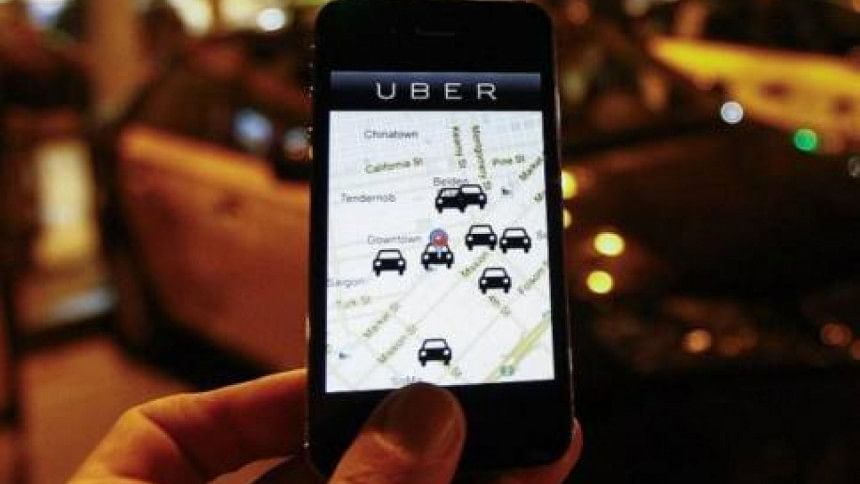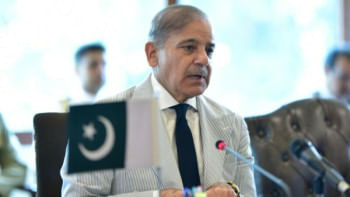Dhaka needs a revolution in its public transportation network

From the very top, I think I should make it clear that living in the snowy apocalyptic hell of Toronto, I do use Uber from time to time. It is a fantastic service which in all certainty is a celebration of free-market economics. Yet I find the Uber-Mania in Dhaka a tad bit concerning. One may very well suggest that I am a pessimist, but please do understand that my overarching concern is quite genuine. In its totality, Uber does not solve, enhance or lighten Dhaka's transportation problems. From a broad picture, it really has no predominant effect.
Let us look at the economics of this. A 6 km. Uber ride from the DCC Market in Banani to the Jatiyo Sangshad Bhaban in Agargaon would cost a consumer approximately Tk. 250. Bangladesh's current average per capita income is approximately Tk. 102,000 per year. Thereby, a common Bangladeshi who earns this mean income, has approximately Tk. 280 to spend per day on consumption and private investment spending. Now if this person spends Tk. 250 on a single Uber ride from Banani to Agargaon, he/she is left with a mere Tk. 30 to spend per day. This trivial economic model illustrates the fact that Uber is not for the average Bangladeshi. It is expensive and inaccessible for the majority of people. It is marketed towards the more privileged classes of our society. If one has the financial ability to ride around the streets of Dhaka via Uber, then surely why should one question or attack them for it? But only a very minute proportion of Bangladeshis can be identified as rich. Moving outside the glamour of Gulshan and Banani, there exists a country which is in dying need of enhanced public transportation and communication infrastructure, and not a showmanship of a global transportation phenomenon.
Back to my point about Toronto, the only really negative thing about this city is the miserable cold temperatures. Other than that, this Canadian metropolitan is one of the best places to live in, and that is partly because of its strong affordable public transportation. The city developed its interior communication structure via the government's tangible support to creating one of the most versatile public transportation networks in the world. After which, it allowed schemes such as Uber or the Limousine service to flourish extensively and support the domestic economy. There is a widely successful structure of prioritising public transportation first, allowing the majority of the citizens to access affordable inter-city services and lastly move onto assisting the growth of external transportation schemes. Bangladesh cannot and must not forget that. Yes, we should have Uber, yes we should continue to celebrate private entrepreneurship, but that cannot be at the cost of forgetting the needs of the majority of our people. In addition to being the abode for the rich and privileged of Bangladesh, Dhaka is also a city of hard-working men and women who travel by buses and trains every day to earn a daily living. It would be an insult to the diligent public if we fail to acknowledge the severity of Dhaka's public transportation woes. These same woes have contributed to Dhaka consistently holding a high ranking in the list of Least Liveable Cities in the World, a denunciation which we should look to overcome.
The Transportation Sector has received 26 percent of the budgetary allocation in the 2016-17 fiscal year, a percentage higher than that of any other national sectors. With projects such as the Dhaka Metro Rail service and the Padma Bridge very much in the priority interests of the government, the question remains what improvements we should practically expect in our existing inter-city railway and bus service. The Dhaka North City Corporation has started working with private companies to facilitate affordable bus services in the region, whilst slowly constraining rickshaw services in the Gulshan-Banani-Bardihara areas. The inter-city train services continue to be lacklustre to say the least. The general concern however is that of availability, safety, security, and hygiene in relation to public transportation. Our enthusiastic Communication's Minister Obaidul Quader received the common complaint from city dwellers about problems such as fans not working and harassment inside public buses and trains. These are all problems which can surely be solved through directed resources, planning and monitoring. Nevertheless, we as a society should realise the gravity of these transportation problems. Yes, ambitious rail projects and bridge constructions are imperative for domestic economic growth and long-term prosperity, but our government should not ignore the plight of the common man.
Lastly, back to my point about Uber. The Almighty has given my family the ability to send me to Canada to complete my higher education, and yes I travel by Uber from time to time to avoid the insanity of the cold. Yet the same father who pays for my tuition also travelled regularly to his office in Mothijheel from our house in Gulshan, via the inter-city train service. He did so because he felt it was affordable and time-saving, but he did so until the day he felt it was unsafe. He and many such fathers and mothers would continue to do so, if our public transportation was up to scratch. It sadly is not. A Grade-10 Economics student could tell us that prioritising public transportation would reduce the consumption of fuel, decrease the use of private cars and encourage citizens to travel via local buses and trains. This is not a problem to which there is no solution.
Uber is a delightful institutional success for the transportation sector and it is equally wonderful that it has reached the streets of Dhaka. But do remember, Uber is not the answer to our traffic-jams, but public transportation is. Our government has invested strongly in this sector, and one hopes that a significant proportion of these resources are directed towards the development of Dhaka's inter-city bus and rail service. We are seeing some good signs, but what we need are not mere signs. Dhaka needs a revolution in its transport sector. We as citizens have a responsibility to continuously demand for such, rather than simply hailing the arrival of a service which would cater to the top 5 percent of the city.
The writer is a student of Economics and International Relations, University of Toronto.
Email: [email protected]

 For all latest news, follow The Daily Star's Google News channel.
For all latest news, follow The Daily Star's Google News channel. 



Comments